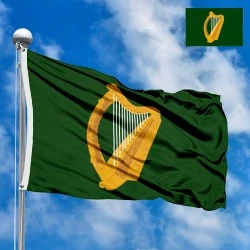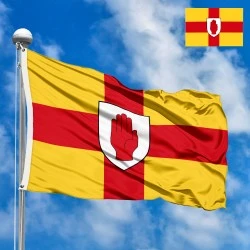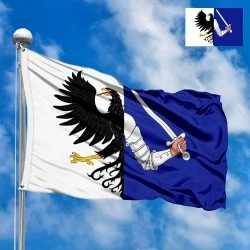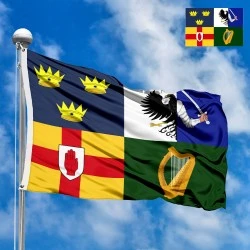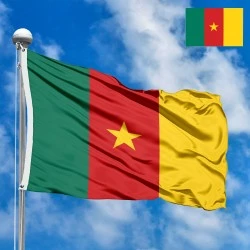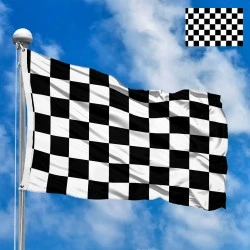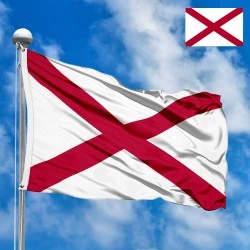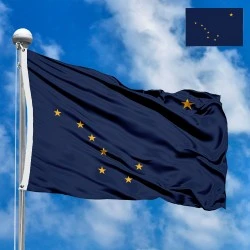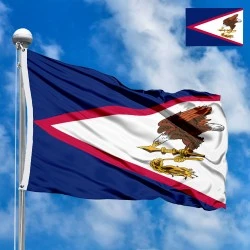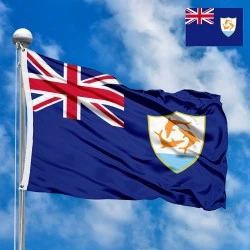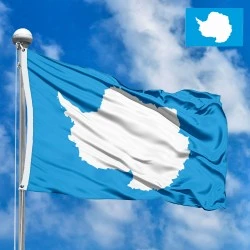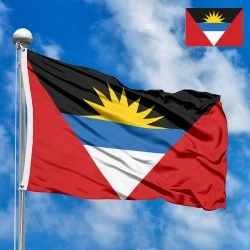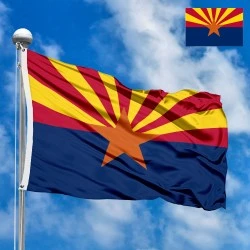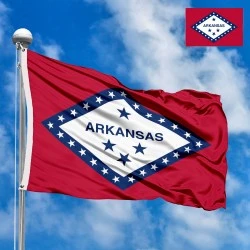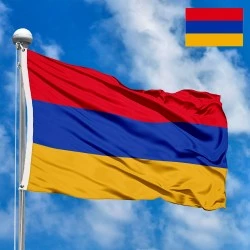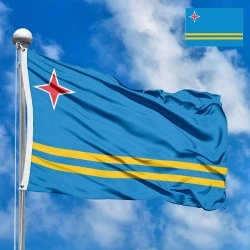Flag of Munster
- Flag Type: Regional
- Proportions (official): 1:2
- Official name: Province of Munster
- Local name: Munster, An Mhumhain
- Sovereignty (year): NO (Province of Ireland)
- Large cities: Cork, Limerick, Waterford
- Highest point: Carrauntoohil (1,038 m)
- Lowest point: Atlantic Ocean (0 m)
- Languages: English, Irish
Flag Information
General information
Demography and Culture
Economy and communications
- All Flags
- Flags of Countries by Continent
-
Flags of Organizations
- Flags of UN countries
- Flags of the European Union countries
- Flags of NATO countries
- Flags of the countries of the Organization of Islamic Cooperation
- Flags of the countries of the Organization of American States
- Flags of the Arab League countries
- Flags of the African Union countries
- Flags of the countries of the Union of South American Nations
- Flags of the Commonwealth of Nations
- Flags of the countries of the Secretariat of the Pacific Community
- Flags of the Nordic Council countries
- Flags of the Caribbean Community
- Flags of the countries of the Association of Southeast Asian Nations
- Flags of the East African Community
- Flags of the countries of the Organization of Turkic States
- LGBT Community Flags
- Historical Flags
- Ethnic Flags
- Flags of the USA (states)
Description
The provincial flag of Munster, one of the four traditional provinces of Ireland, is a powerful visual representation steeped in centuries of Irish history and heraldry. Unlike a national flag, which symbolizes a sovereign state, the Munster flag serves as a deeply resonant cultural and historical emblem for the people and heritage of this southwestern region of Ireland. Its design is elegantly simple yet profoundly symbolic: a vibrant blue field adorned with three golden (or yellow) antique crowns. While there are no rigidly enforced official dimensions for provincial flags, they typically adhere to common flag ratios such as 1:2 or 2:3, ensuring a balanced and aesthetically pleasing display, whether flown independently or as part of a larger collection of Irish provincial flags.
Arrangement of Elements: The Triad of Sovereignty The primary elements of the Munster flag are straightforward: a single, unadorned blue field featuring three distinct antique crowns. These crowns are typically arranged in a configuration where two crowns are placed above, and one is positioned centrally below them, forming a triangular pattern. This heraldic arrangement, known as "two and one," is common in vexillology and ensures visual balance and prominence for each crown. The simplicity of the design allows the profound symbolism of the colors and the crowns themselves to take center stage, conveying the rich historical and cultural narratives associated with Munster. The crowns are almost always depicted in a bright gold or yellow, providing a striking contrast against the deep blue background and making them highly visible and recognizable.
Colors and Symbolism: A Royal Blue Canvas of History The colors and elements of the Munster flag are rich with historical and symbolic meaning, reflecting the ancient sovereignty and cultural heritage of the province:
-
Blue Field: The deep blue background of the flag is a color of immense historical significance in Irish heraldry and symbolism. Blue, often referred to as "St. Patrick's Blue," has long been associated with sovereignty, majesty, and the very concept of Ireland itself. It can be seen in various historical Irish emblems and flags, including the Presidential Standard of Ireland. For Munster, this blue evokes the ancient and independent kingdoms that once flourished in the region, signifying their regal status and deep connection to the land and its people. It also subtly suggests the province's coastal location, with its strong maritime traditions, facing the vast Atlantic Ocean.
-
Three Golden/Yellow Antique Crowns: These are the most distinctive and intriguing elements of the flag.
-
Antiquity and Regal Power: The term "antique crowns" suggests a design that predates modern European royal crowns, often depicted with simple circlets and three points, emphasizing their ancient origins and the timeless nature of Munster's historical claims to sovereignty. They are golden or yellow, colors traditionally associated with wealth, prosperity, and divinity in heraldry.
-
Interpretation of the "Three": The precise meaning of the three crowns has been a subject of scholarly debate and popular interpretation for centuries. Several prominent theories exist:
-
Three Ancient Kingdoms/Dioceses: One common interpretation links the three crowns to the three ancient divisions or kingdoms within Munster: Ormond (East Munster), Desmond (South Munster), and Thomond (North Munster). Alternatively, they could represent the three major ecclesiastical sees or archbishoprics of Munster in historical times. This suggests a unity of spiritual and temporal power within the province.
-
Three Legendary Kings: Another theory posits that the crowns symbolize three legendary or historical kings who held sway over the entire province, representing the enduring legacy of Munster's royal lineage.
-
Trinity or Sacred Symbolism: Given the deep Christian roots of Ireland, some interpretations subtly hint at a connection to the Holy Trinity, imbuing the flag with a spiritual dimension that reflects the religious piety prevalent in the region's history.
-
-
Regardless of the exact historical origin, the three crowns collectively represent Munster's historical autonomy, its royal past, and its distinct identity within Ireland. They serve as a powerful reminder of a time when Munster was a formidable power, capable of defending its own interests and maintaining its unique cultural and political structures. The golden crowns against the blue field symbolize enduring legacy, wealth, and the rightful claim to authority that has characterized Munster throughout its long and storied history.
-
History of the Flag's Creation and Adoption: A Legacy Unfolding The arms of Munster, featuring the three crowns on a blue field, are among the oldest and most consistently depicted provincial arms in Irish heraldry, with their origins tracing back to the 13th century or even earlier. While there isn't a single definitive "creation date" in the way a modern national flag might be adopted by parliamentary decree, the visual elements have been continuously used and recognized for centuries. They appeared in various forms on maps, in historical texts, and on the standards of Munster chieftains and later Anglo-Norman lords who assimilated into Irish culture.
The consistent use of the three crowns on a blue field indicates a strong, enduring provincial identity that predates the modern concept of national flags. In the medieval period, these arms would have served as identifying symbols for the Kingdom of Munster, reflecting its status as a powerful regional entity within Ireland. Over time, as Ireland's political landscape shifted dramatically—through English conquest, plantation, and eventually the Act of Union—these provincial arms remained, enduring symbols of a distinct regional identity even when political sovereignty was lost.
In the 19th and 20th centuries, with the rise of Irish nationalism and the development of modern sporting and cultural organizations, these ancient provincial symbols found new life. The Flag of Munster, as we know it today, became particularly prominent through its adoption by various sporting bodies, most notably Munster Rugby, one of the most successful and passionately supported rugby teams in Europe. This adoption solidified the flag's role as a unifying symbol for the people of Munster, regardless of their individual political views, fostering a strong sense of regional pride and collective identity. Its acceptance has been organic and widespread, driven by cultural affiliation rather than formal governmental decree.
Country and Region Context: The Heart of Ireland's Southwest Munster (An Mhumhain in Irish) is the southernmost of the four traditional provinces of Ireland. It comprises six counties: Clare, Cork, Kerry, Limerick, Tipperary, and Waterford. Geographically, Munster is diverse, ranging from the rugged coastline of Kerry and Cork, renowned for their breathtaking beauty, to the fertile Golden Vale of Tipperary, an agricultural heartland. The region boasts a rich linguistic heritage, with Gaeltacht (Irish-speaking) areas in Cork, Kerry, and Waterford preserving the Irish language and traditional culture.
Historically, Munster was home to powerful Gaelic kingdoms, most notably the Kingdom of Munster, which produced figures like Brian Boru, one of Ireland's greatest high kings. Its history is marked by periods of strong independence, but also by significant interaction and conflict with external forces, including the Vikings, Normans, and later the English. The province's flag, therefore, represents not only its ancient past but also its enduring cultural distinctiveness within the broader Irish context. It is a region characterized by a fierce sense of local identity, strong community bonds, and a deep connection to its historical roots, all of which are encapsulated by its iconic flag.
Interesting Facts: More Than Just a Flag
-
Sporting Icon: The Munster flag is arguably best known globally through its association with Munster Rugby. The team's iconic red jersey often features the three crowns of Munster, making the flag a symbol of sporting excellence and unwavering regional pride, particularly during their successful campaigns in European competitions. Fans from across the province passionately wave this flag, demonstrating its unifying power beyond pure historical or political contexts.
-
"An Mhumhain Abú": This traditional Irish rallying cry, meaning "Munster Forever!" or "Victory to Munster!", is often heard alongside the display of the Munster flag, particularly at sporting events. It encapsulates the deep sense of loyalty and passion associated with the province and its symbols.
-
Variations in Crown Depiction: While the general design remains consistent, minor variations in the artistic depiction of the "antique crowns" can be found across different historical and modern renditions of the flag. Some might feature more ornate details, while others are simpler, but the core element of three crowns remains unchanged.
-
Part of a Larger Symbol: As discussed in the context of the "Flag of the Four Provinces," the Munster flag forms one of the four quadrants of that all-Ireland symbol. This illustrates how the individual provincial identities collectively contribute to a broader sense of Irish heritage.
-
Prevalence in Local Emblems: The three crowns of Munster are not confined to the flag; they appear in various local coats of arms, civic symbols, and organizational logos throughout the province, underscoring their deep integration into Munster's visual identity and collective memory. This widespread use reinforces the flag's authenticity and enduring relevance as a symbol of regional pride.
In the demonstration images, full-size flags are shown with proportions of 2:3, and hand-held flags with proportions of 1:2.
Donation
Download
Completely free for commercial and non-commercial use (public domain).
You can freely use them in your news magazines, websites, software, mobile applications.
We appreciate a backlink to https://flagssite.com
Raster files - Flag of Munster (PNG, JPG)
 Waving flag
Waving flag
- PNG format (transparent background), 72dpi, dimensions in Pixels (px), aspect ratio 3:4.
- 15х20 px
- 30х40 px
- 60х80 px
- 120x160 px
- 240x320 px
 Sizes:
Sizes:
"v15" - image size (by height); if necessary, replace with available: v15, v30, v60, v120, v240.
!!! For resizing, use the Latin (eng) keyboard layout.
<img src="https://flagssite.com/flags/v15/20268.png" alt="Flag of Munster">
 Round flag
Round flag
- PNG format (transparent background), 72dpi, dimensions in Pixels (px), aspect ratio 1:1.
"d15" - image size (diameter); if necessary, replace with available: d15, d30, d60, d120, d240.
!!! For resizing, use the Latin (eng) keyboard layout.
<img src="https://flagssite.com/flags/d15/20268.png" alt="Flag of Munster">
 Rectangular flag 2:3
Rectangular flag 2:3
- JPG format, 72dpi, dimensions in Pixels (px), aspect ratio 2:3.
"h30" - image size (by height); if necessary, replace with available: h15, h30, h60, h120, h240, h360, h480.
!!! For resizing, use the Latin (eng) keyboard layout.
<img src="https://flagssite.com/flags/h30/20268.jpg" alt="Flag of Munster">

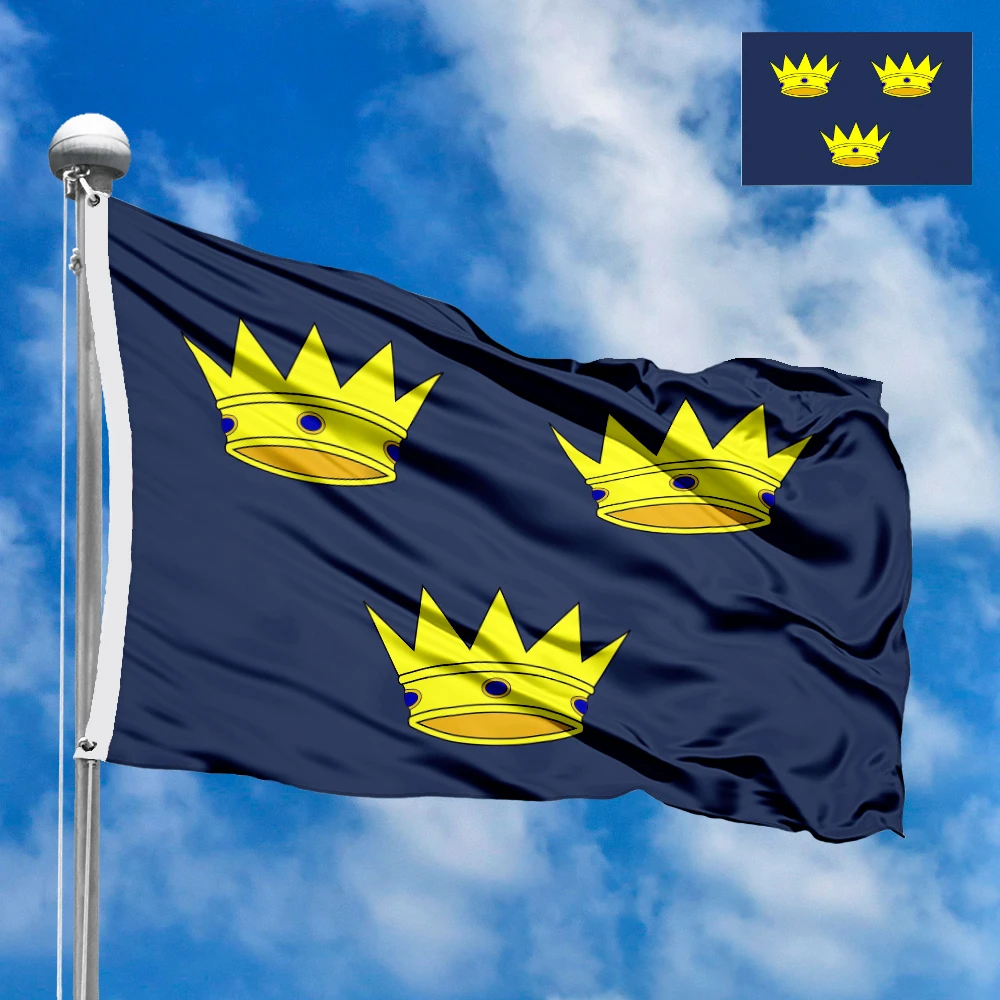




 Sizes:
Sizes:
 Sizes:
Sizes:
